 Have you heard the legend of Peter Niers, the medieval bandit and killer? As one of Germany’s most reviled criminals, raping and pillaging his way through the unsuspecting landscape of 16th-century Europe for 15 years, his legacy is well-marked by dark history. Believed to have murdered over 500 people during his heyday, the story of his life covers just about every classically nefarious theme imaginable: theft, murder, escape, torture, infanticide, black magic, even cannibalism. While his legitimacy as an established historical figure is undisputed, Neirs eventually took on a more legendary status when he escaped capture and continued to evade the law for many years. This, along with his sociopathic bloodlust, forged him into a despicable and terrifying medieval boogeyman.
Have you heard the legend of Peter Niers, the medieval bandit and killer? As one of Germany’s most reviled criminals, raping and pillaging his way through the unsuspecting landscape of 16th-century Europe for 15 years, his legacy is well-marked by dark history. Believed to have murdered over 500 people during his heyday, the story of his life covers just about every classically nefarious theme imaginable: theft, murder, escape, torture, infanticide, black magic, even cannibalism. While his legitimacy as an established historical figure is undisputed, Neirs eventually took on a more legendary status when he escaped capture and continued to evade the law for many years. This, along with his sociopathic bloodlust, forged him into a despicable and terrifying medieval boogeyman.

In spite of his mercurial persona and heinous deeds, Niers really secured his legendary status when an author by the name of Johann Wick followed his criminal career between the years 1577 and 1582, eventually writing three different popular booklets about his encounters. To the people of medieval Europe, Neirs was both fascinating and fearsome—a heady combination for any villain. His name was woven into ballads depicting his amazing escape, and versions of his love for cannibalism and black magic kept children awake at night in their narrow beds. A master of disguise with a penchant for escape, Niers was a serial killer rumored to have received the gift of invisibility from the Devil himself. During a time when confessions and torture went hand in hand, his gripping capture eventually led to some hair-raising admissions of fetal murder and one of the most grisly executions in history.

Peter Niers was born in 15th-century Germany at the height of medieval darkness when serfdom, fear, and poverty were the chief products in life. As a peasant, life for Niers offered mostly oppression and enforced taxes no one, including his family, could really afford. The poor had no recourse against the nobility and were often denied the universal right to visit the woods, streams, and natural areas of their own land. This led to considerable resentment in a place like Alsace—once situated in a power struggle between Germany and France—where Peter Niers found his start. The malcontents of the area who faced this ill-treatment adopted a symbol of revolt called the Bundschuh , a wooden shoe worn by peasants, which represented their lowly status and ongoing willingness to stomp out the oppression of the elite. There were constant outbreaks of insurrection, all of which were swiftly stifled by the established authority using violence and whatever tactics were necessary. For young Niers, this was the way of the land and an affirmation that asking for what you want doesn’t solve anything. Action—the angrier the better—was the only way to be heard.
, a wooden shoe worn by peasants, which represented their lowly status and ongoing willingness to stomp out the oppression of the elite. There were constant outbreaks of insurrection, all of which were swiftly stifled by the established authority using violence and whatever tactics were necessary. For young Niers, this was the way of the land and an affirmation that asking for what you want doesn’t solve anything. Action—the angrier the better—was the only way to be heard.

The revolution of 1525, which exemplified the rural uprising of the period, created a general resentment towards the wealthy and likely shaped Niers’s formative years. Because he grew up Protestant, which was the most renounced religion of the time, he was likely forced to grapple with his own identity and beliefs on a regular basis, while still trying to find acceptance within his community. With the help of zero education and the presence of perpetual fear, Niers found power, prestige, and even wealth in the dark underworld he managed to create for himself. There, he was the master of his domain, answerable to no one and beholden only to his personal desires.
 Being a highwayman—otherwise known as a medieval bandit—required a nimble body and a dastardly mind, two qualities Niers offered in spades. In those days, roads leading out-of-town often meandered through dense woods and mountains and were filled with countless shadowy hiding places for villains looking to hijack a carriage, rob unsuspecting travelers, or stick a knife in the belly of a resistor.
Being a highwayman—otherwise known as a medieval bandit—required a nimble body and a dastardly mind, two qualities Niers offered in spades. In those days, roads leading out-of-town often meandered through dense woods and mountains and were filled with countless shadowy hiding places for villains looking to hijack a carriage, rob unsuspecting travelers, or stick a knife in the belly of a resistor.
 Niers was the leaders of one such gang who lingered in the outskirts of the city, lying in wait for those deemed worthy of raiding. This corrupt network of criminals roamed the countryside, always changing composition, gathering together for larger “jobs” or splintering off into smaller factions for more targeted endeavors. Historians believe Niers and his gang began their first criminal operation in Alsace, France by gathering 24 men together and moving on to other nearby cities in search of things to steal and sell. Like land-pirates without a code, they made their way through the hills and towns, always leaving behind some kind of bloody mark or frightening tale.
Niers was the leaders of one such gang who lingered in the outskirts of the city, lying in wait for those deemed worthy of raiding. This corrupt network of criminals roamed the countryside, always changing composition, gathering together for larger “jobs” or splintering off into smaller factions for more targeted endeavors. Historians believe Niers and his gang began their first criminal operation in Alsace, France by gathering 24 men together and moving on to other nearby cities in search of things to steal and sell. Like land-pirates without a code, they made their way through the hills and towns, always leaving behind some kind of bloody mark or frightening tale.
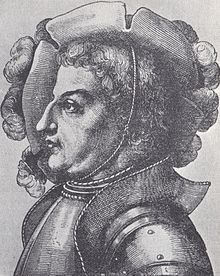 Not a lot is known about the initial capture of Peter Niers. Even historical accounts on the subject are spotty at best, but what is documented serves as the springboard to a horrific tale of depravity and violence. For 11 long years, Niers and his unruly gang had terrorized the border of Germany and France, that is until they were apprehended in Gersbach, Germany in 1577. Tortured into submission by authorities, Niers copped to 75 murders, including the deaths of many local women who had mysteriously disappeared. It was a relief to finally have such a vile man in custody, and the entire community breathed a communal sigh of relief. But just when it seemed justice would deliver a swift and brutal punishment, Niers managed to escape his confines and disappear like a vapor into the night, only to resurface later in a much ghastlier form.
Not a lot is known about the initial capture of Peter Niers. Even historical accounts on the subject are spotty at best, but what is documented serves as the springboard to a horrific tale of depravity and violence. For 11 long years, Niers and his unruly gang had terrorized the border of Germany and France, that is until they were apprehended in Gersbach, Germany in 1577. Tortured into submission by authorities, Niers copped to 75 murders, including the deaths of many local women who had mysteriously disappeared. It was a relief to finally have such a vile man in custody, and the entire community breathed a communal sigh of relief. But just when it seemed justice would deliver a swift and brutal punishment, Niers managed to escape his confines and disappear like a vapor into the night, only to resurface later in a much ghastlier form.
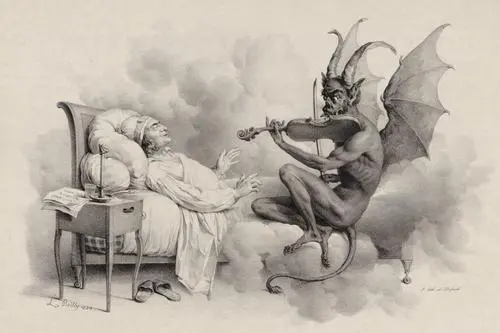
As is often the case with folks who raise the bar on evil deeds, Peter Niers began to assume legendary status after escaping his torturers the first time. Not only had he admitted to being a straight-up serial killer, but he had somehow managed to dissolve into the medieval countryside where rounding up a criminal was no easy task. It was during this godless tour that Niers supposedly gathered his mates and took up allegiance with the only force greater than himself—the Devil. Meeting in Pfalzburg, the men allegedly met with Satan and were offered his blessing and financial support to continue carrying out their diabolical plans, even endowing Niers with considerable supernatural powers. As a result of this meeting, Niers supposedly developed the power to shape-shift and take on the form of an animal or inanimate object at will. But this tremendous ability carried with it a steep price, as Niers would need to keep a steady supply of infant fetuses in his possession, which would give him vigor and renewed life. Various Germanic legends and contemporary authors specifically mention these practices as being a form of powerful black magic used by Niers to render himself invisible. It was also believed he used the flesh and fat of these infants to make magic candles that, when lit, would allow him to silently break into homes at night without waking the owners. Using the flesh of the innocent in this way, he was invisible from the eyes of those who would hunt him down. All of his unnatural powers relied on the infant death, who must be sacrificed on his behalf.
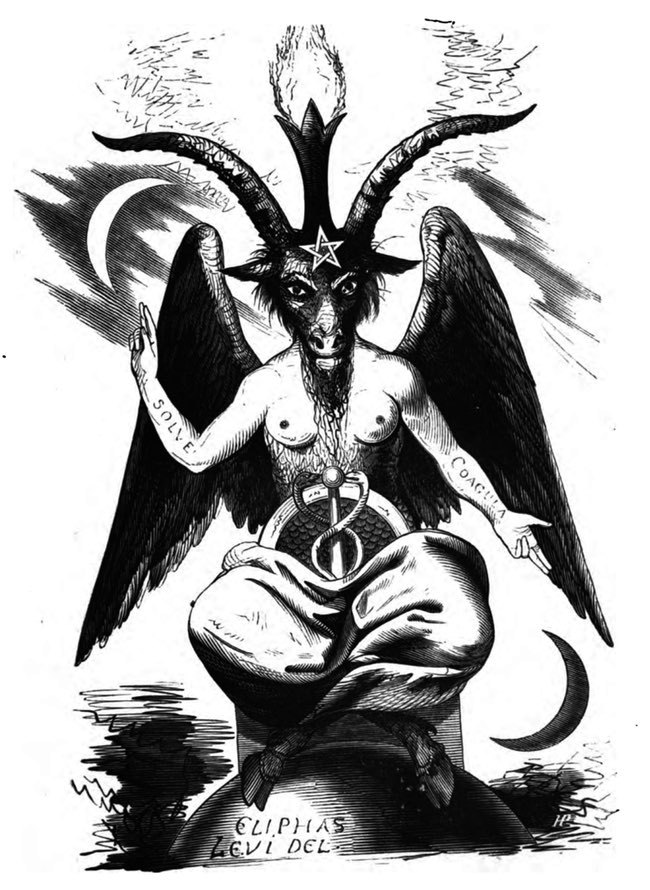
A warrant issued in 1579 for the capture of Niers stated there were some things about him that did not change, however—he was known to always carry a great deal of money, two loaded pistols, and a broad sword. Those who had actually glimpsed the chameleon described him as “rather old,” with two crooked fingers and a long scar on his chin.

The unholy career of Peter Niers would finally come to an end in 1581 when he stopped to lodge at “The Bells” in Neumarkt. According to a Germanic ballad, Niers was a person of considerable notoriety by this point, and his description had been keenly observed by all in the area. In an attempt to lay low, Niers rested for a few days at the inn until he finally felt it was safe to visit the public bath house for a quick wash up. Believing he was still unrecognized, Niers asked the innkeeper to hold on to his personal bag for safekeeping, claiming it was particularly valuable. To the proprietor, it appeared to be nothing more than a small, leather pouch with something soft inside, and he received it casually. But as Niers lay soaking in his bath a few minutes later, low whispers broke out around him as people began to take note. Other guests whispered amongst themselves: Could that be the Peter Niers? Exhausted from his recent exploits, Niers was oblivious to their attention, until it was too late.
 Immediately, two locals slipped out of the bath house and went to discover where Niers was staying. Locating the inn, they informed the manager that he was likely housing a serious fugitive with a gnarly reputation who was, at that very moment, languishing in a nearby bath. Fearing the worst, the innkeeper pulled out the small leather satchel belonging to Niers and opened it, never imagining what he might find. Inside were the tiny cut-off hands and dried hearts of fetuses violently removed from their mothers’ womb—the once-living tissue that fueled his wickedness. Instantly recognizing these grim items to be the work of black magic, the townspeople moved quickly on Niers, sending eight strong men to seize him. Given his notoriety, many folks were surprised at how easy it was to actually apprehend the criminal. Others who knew the story well believed Niers was only caught because he had been briefly separated from his foul bag of magic, thereby rendering him visible and mortal. It seemed the end had finally arrived for Niers, and he readily identified himself and admitted to killing an astounding 544 people.
Immediately, two locals slipped out of the bath house and went to discover where Niers was staying. Locating the inn, they informed the manager that he was likely housing a serious fugitive with a gnarly reputation who was, at that very moment, languishing in a nearby bath. Fearing the worst, the innkeeper pulled out the small leather satchel belonging to Niers and opened it, never imagining what he might find. Inside were the tiny cut-off hands and dried hearts of fetuses violently removed from their mothers’ womb—the once-living tissue that fueled his wickedness. Instantly recognizing these grim items to be the work of black magic, the townspeople moved quickly on Niers, sending eight strong men to seize him. Given his notoriety, many folks were surprised at how easy it was to actually apprehend the criminal. Others who knew the story well believed Niers was only caught because he had been briefly separated from his foul bag of magic, thereby rendering him visible and mortal. It seemed the end had finally arrived for Niers, and he readily identified himself and admitted to killing an astounding 544 people.
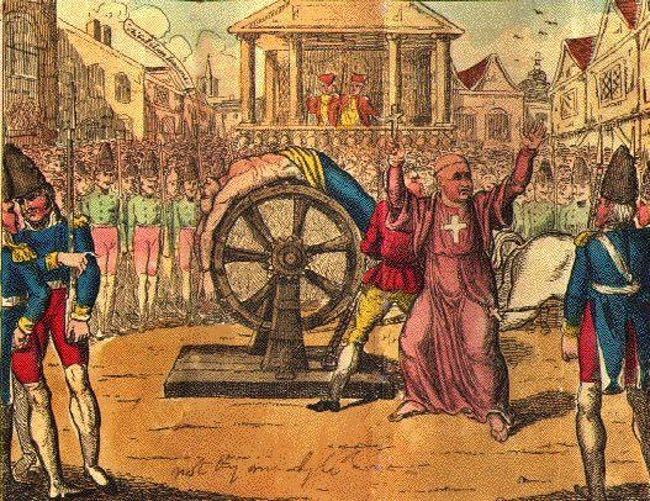
The torture and execution of Niers gave new definition to the phrase “going medieval on someone,” as he languished in agony for three grueling days. It was September 1581, and people gathered from far and wide to share in the communal process of watching resident evil die. According to a popular ballad written about the execution, strips of his flesh were systematically ripped from his body on the first day, while hot oil was poured into the open wounds. On the second day, the bottoms of his feet were smeared with grease and held above burning coals, essentially roasting him alive. And on the third day, he was dragged through the streets and strapped to the infamous breaking wheel, where his body received 42 bone-breaking blows. When this did not kill him, the executioner quartered him by sawing his limbs from his body.
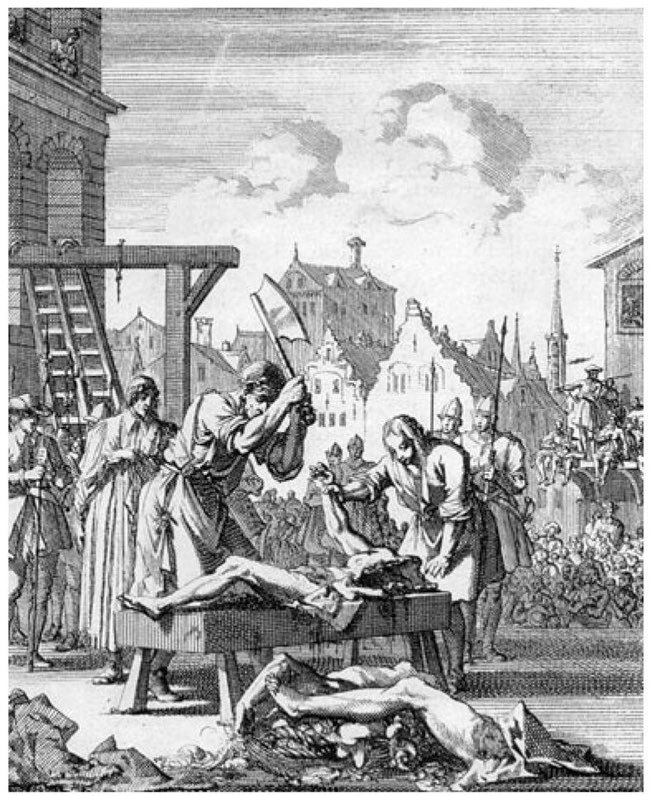
Arguably the most popular and horrific of all medieval tortures, the breaking wheel was arguably much worse than its name. Typically made from a wooden wagon wheel large enough to hold a person, the device had radial spokes that could work in a variety of ways. Sometimes the condemned were lashed to the wheel while their limbs were beaten with a club or iron cudgel, and other times they were laid spread-eagle on top of the wheel, where they could be beaten and properly displayed afterward. Although grisly and horrific, the medieval execution of Niers was not considered unusual for a criminal of his status. According to his own confessions, he was, hands down, the most prolific serial killer to date, and in this world of an “eye for an eye,” his punishment hardly seemed extreme. In fact, his suffering was met with a mixture of celebration and reverence.

When it came to the breaking wheel, the French were characteristically creative, placing the culprit on the revolving wheel with their limbs stretched out along the spokes. A large hammer then came down periodically to smash the person’s appendages between the gaps. This would go on until the person’s arms and legs were broken enough to intertwine them through the spokes or until the crowd screamed for the coups de grâce, which took place when the torturer delivered a few “merciful” blows to the person’s chest or abdomen. This move often brought about a quicker death, as leaving them alone on the wheel could drag out their suffering for days, and their eyes would eventually be plucked out by ravens. If these shots to the torso were not deemed merciful enough, some privileged victims might be strangled after just a few blows—or before they even began—to spare the condemned from further suffering.While there were accounts of the 14th-century murderer, Bona Dies, surviving on the wheel for four days after enduring such a punishment, most victims died quickly from shock, blood loss, or dehydration.

But given all the stories of Peter Niers, what was true? Could he really have eaten the flesh of the innocent and carried the gruesome tokens from place to place? Perhaps. But it’s less likely that Niers actually formed a pact with the Devil who enabled him to live as a magical predator. Any 16th-century European citizen living in the shadow of such a terrifying figure would surely have found more understanding in this explanation than trying to discern why he had committed so many unjustified atrocities. Of course, notions of mental illness and suppressed rage existing during this era but were largely misunderstood by people who often sought answers in the divine. They may not have been able to conceive the machinations of a psychopath, but the Devil? That they could understand. A more contemporary analysis suggests the rumor of Neirs’s shapeshifter status likely sprang from the stories of his ever-changing appearance, rather than a true ability to take the form of an animal. As a master of disguise, he frequently altered his clothing and features, sometimes masquerading as a soldier, a businessman, or even a leper.

The story of Peter Niers also emphasizes the classic relationship between torture and confession. People often wonder why medieval admissions were so prolific, and the answer is pretty straightforward—mind blowing pain will make you say anything. Historically used for purposes of interrogation, brutal torture was once believed to be the only effective way to locate the truth. Originating from the Latin word tortura meaning “to twist,” the process often involved a manipulation of the limbs or the turning of screws and ligatures.
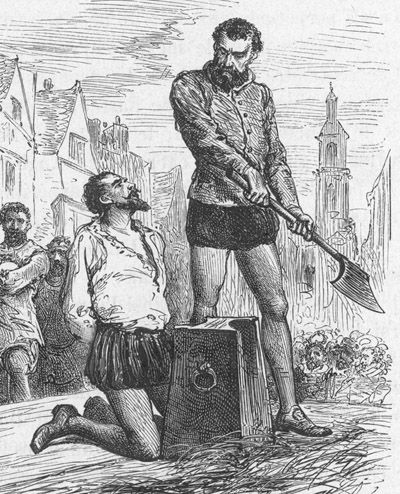 In the eyes of the Church, this allowed torture to occur without much blood, which likely made the whole event a bit more justifiable—and palatable. But unfortunately, this pernicious form of persuasion also “twisted” the truth by turning it to wild fantasy. As a result, medieval confessions tended to sound hyperbolic, mystifying, or just plain fabricated. But for the good townspeople listening to them at the time, they became a vindication of their worst fears and the perfect excuse to exact some serious pain of their own.
In the eyes of the Church, this allowed torture to occur without much blood, which likely made the whole event a bit more justifiable—and palatable. But unfortunately, this pernicious form of persuasion also “twisted” the truth by turning it to wild fantasy. As a result, medieval confessions tended to sound hyperbolic, mystifying, or just plain fabricated. But for the good townspeople listening to them at the time, they became a vindication of their worst fears and the perfect excuse to exact some serious pain of their own.
And the rest is history.

I came across your The Execution Of Peter Niers Killed The Medieval Boogeyman – The Raven Report website and wanted to let you know that we have decided to open our POWERFUL and PRIVATE website traffic system to the public for a limited time! You can sign up for our targeted traffic network with a free trial as we make this offer available again. If you need targeted traffic that is interested in your subject matter or products start your free trial today: http://mylinks.top/h Unsubscribe here: http://pcgroup.com.uy/2a
LikeLike
What does a 19th century Eliphas Levi image of a Sabbatic Goat, commonly known as The Baphomet, have anything to do with his sick f*ck’s “Devil Worship” ? Read up, dude.
LikeLike
Atmosphere, my friend.
LikeLiked by 1 person